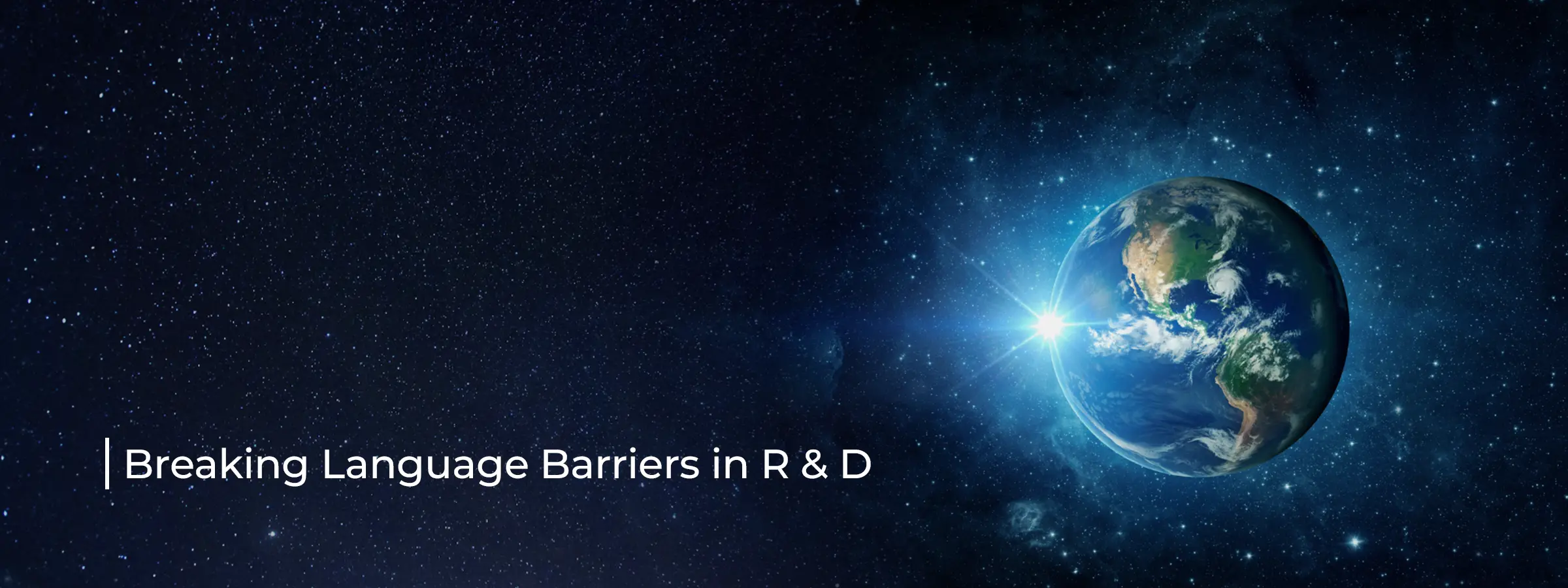
In the expansive universe of Research and Development (R&D), the power of collaboration transcends geographical and disciplinary boundaries. Yet, the language challenge is one of the most formidable barriers to this global partnership. As R&D departments within Global Capability Centres (GCCs) push the boundaries of science, technology, and innovation, the role of sophisticated language services in bridging linguistic divides has never been more critical. This post delves into the complexities of technical language translation, the paramount importance of seamless knowledge sharing, and how surmounting these obstacles can catalyse groundbreaking advancements in R&D.
At the heart of R&D lies science and technology's intricate and specialised language. Technical translation is not merely about converting text from one language to another; it's about accurately conveying concepts, methodologies, and data that are often at the cutting edge of human knowledge. The precision required is unparalleled, as a minor error in translation can lead to misunderstandings, misapplications of research, and even safety risks. This underscores the need for language services beyond basic translation, including deep technical expertise and contextual understanding.
Global collaboration is the engine of innovation in today’s R&D landscape. However, effective collaboration hinges on sharing knowledge freely and accurately across language barriers. Language services are pivotal in this process, enabling researchers from diverse linguistic backgrounds to contribute to and benefit from the collective global knowledge pool. Language services ensure no insight is lost by providing precise, accurate translations of research findings, technical documents, and collaborative communications.
The challenges of technical translation and knowledge sharing in R&D are significant, but the potential rewards of overcoming these barriers are monumental. When language services successfully bridge the gap between languages, they enable the flow of ideas and innovations that can lead to breakthroughs. These breakthroughs not only advance the frontiers of science and technology but also have the potential to address some of the world’s most pressing challenges, from healthcare to climate change.
The latest developments in language services are leveraging artificial intelligence (AI) and advanced technologies to enhance translation accuracy, speed, and efficiency. AI-driven tools can quickly process and translate vast quantities of technical documents, learning from corrections and feedback to continuously improve. These technologies support real-time collaboration across global R&D teams, facilitating a more dynamic and responsive approach to innovation.
For GCCs, investing in high-quality language services is not just a logistical necessity; it's a strategic imperative. As the epicentres of global R&D efforts, GCCs benefitted enormously from the enhanced collaboration and accelerated innovation that effective language services can support. By breaking down language barriers, GCCs can harness the full potential of their international research teams, driving forward global innovation agendas and reinforcing their positions as leaders in the technological and scientific arena.
Breaking language barriers in R&D represents the next frontier in global innovation. As we look to the future, the role of language services in facilitating international collaboration, understanding, and discovery has never been more critical. By embracing the latest advancements in language technology and services, R&D departments within GCCs can overcome the challenges of technical translation and knowledge sharing and unlock new realms of global innovation. In this endeavour, language services are both tools and catalysts for change, driving the international R&D community closer to the solutions that will shape our future.
© 2024 WHITE GLOBE GROUP PVT LTD